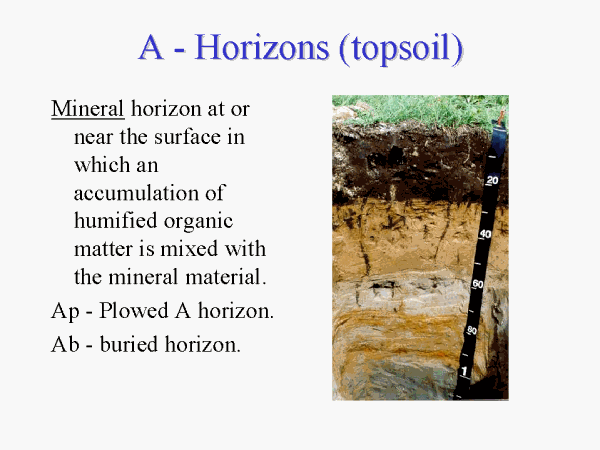| First Previous Next Last Index Home Text Slide 4 of 14 |
 |
Notes:
The first requirement for all master horizons other than O horizons is that they are composed mostly of mineral material. It is very important to be able to differentiate organic from mineral material. Dark color of the A horizon is due to the mixing of humus with mineral. If the A is more than 2-3 inches thick, it has probably been plowed, look for an abrupt boundary such as the photo above. Some pedons in wooded areas have an A horizon that formed over an old Ap (most of the Northeast was farmed in the past).
From Soil Taxonomy:
A horizons: Mineral horizons which have formed at the
surface or below an O horizon; they exhibit obliteration
of all or much of the original rock structure and show one
or both of the following: (1) an accumulation of humified
organic matter intimately mixed with the mineral fraction and not
dominated by properties characteristic of E or B horizons (defined
below), or (2) properties resulting from
cultivation, pasturing, or similar kinds of
disturbance.
If a surface horizon has properties of both A and E horizons but the feature emphasized is an accumulation of humified organic matter, it is designated an A horizon. In some places, as in warm arid climates, the undisturbed surface horizon is less dark than the adjacent underlying horizon and contains only small amounts of organic matter; it has a morphology distinct from the C layer, although the mineral fraction is unaltered or only slightly altered by weathering. Such a horizon is designated A because it is at the surface; however, recent alluvial or eolian deposits that retain fine stratification are not considered to be A horizons unless cultivated.